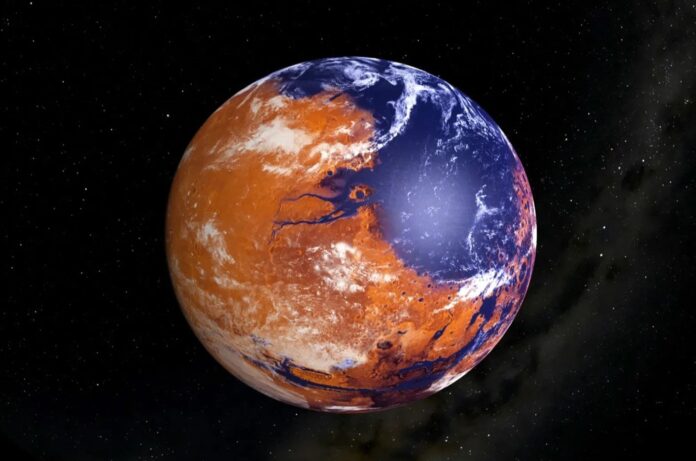 Why did Mars, which was covered with rivers and lakes, turned into a dry and cold desert? A new study by scientists from the Institute of Astronomical Physics in Andalusia in Spain provides answers to these questions. Results Published In the Journal of Astronomy.
Why did Mars, which was covered with rivers and lakes, turned into a dry and cold desert? A new study by scientists from the Institute of Astronomical Physics in Andalusia in Spain provides answers to these questions. Results Published In the Journal of Astronomy.
Mars is now covered in dry deserts, with most of the remaining water in the ground and in the poles. But the geological evidence of early space missions indicates that billions of years ago, the planet carried large amounts of liquid water – enough to cover the surface at a depth of about 100 meters.
One is an explanation for the loss of water involves the collapse of water vapor in the atmosphere by ultraviolet radiation from the sun.
The hydrogen produced in this process can leave the atmosphere, taking water molecules with it. Recent measurements show that huge amounts of hydrogen are lost from Mars atmosphere every day.
However, accounts show that this mechanism cannot completely explain the volume of water loss over billions of years.
The authors of a new study from the Institute of Astronomical Physics in Andalusia in Spain assumed that the fluctuations in the tilt of the Mars rotation axis played an important role.
Unlike the Earth, which is preserved by the moon, Mars suffers from sharp changes in the angle of inclination – from 0 to 66 degrees – with an average of about 35 degrees.
According to the model, with an increase in the tilt of the axis, the Arctic of Mars receives more sunlight, causing ice melting and increasing the amount of water vapor in the atmosphere.
In turn, this increases the release of hydrogen in space. Computer modeling has shown that at a mile of 35 degrees, the hydrogen leakage rate increases by about one billion corn annually compared to the current values.
In addition, the common dirt storms in Mars increases the loss of hydrogen by 50 percent, depending on their severity.
The common effect of these factors, as researchers estimated, can lead to a loss of water equivalent to a layer of about 80 meters across the surface of the entire planet. This value is close to the minimum estimates of the size of the water that was on Mars.
Authors note that the formation of Mars dust and other parameters can differ from current parameters, which also affected water loss.

